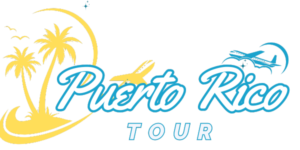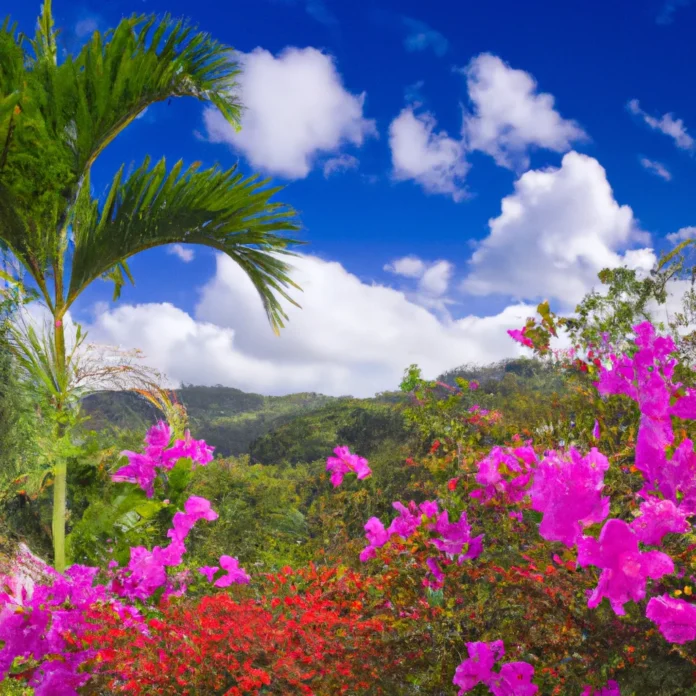Puerto Rico is often recognized for its stunning landscapes, rich history, and diverse culture. However, there is a specific aspect of Puerto Rico that has captivated many: its unique ecosystems and the diversity of wildlife found throughout the island. The term “beast” in this context refers to the various species and the natural phenomena that showcase the island’s ecological significance. This article aims to provide a comprehensive exploration of Puerto Rico’s ecosystems, wildlife, and conservation efforts, highlighting the elements that truly astonish visitors and locals alike.
Puerto Rico’s Natural Ecosystems
Puerto Rico’s landscape is a mosaic of ecosystems, each contributing to the island’s environmental health and biodiversity. From lush rainforests and dry forests to wetlands and coastal areas, these ecosystems support a wide variety of plant and animal life.
El Yunque National Forest
El Yunque National Forest, the only tropical rainforest in the United States National Forest System, is a vital ecological area. Spanning approximately 28,000 acres, it is home to over 240 species of trees, many of which are unique to Puerto Rico. The forest’s elevation ranges from sea level to 3,500 feet, creating diverse microclimates that support a rich variety of flora and fauna.
Among the noteworthy inhabitants are the Puerto Rican parrot, one of the world’s most endangered birds, and the coquí, a small tree frog famous for its distinctive call. Conservation efforts are ongoing to protect these species, with programs in place to restore their populations.
Dry Forests of Guanica
In stark contrast to the lushness of El Yunque, the Guanica Dry Forest is a UNESCO World Biosphere Reserve characterized by its semi-arid climate. This ecosystem features unique plant species such as the cacti and broadleaf dry forest trees. The dry forest is a sanctuary for various wildlife, including the Puerto Rican boa, one of the largest snakes on the island, and numerous bird species that thrive in its unique environment.
Coastal and Marine Ecosystems
The coastal regions of Puerto Rico are equally significant. With miles of beaches, mangroves, and coral reefs, these ecosystems are critical for marine biodiversity. They serve as breeding grounds for many fish species and provide a habitat for various marine animals.
Coral Reefs
Puerto Rico’s coral reefs, particularly those found in La Parguera and Fajardo, are among the most diverse in the Caribbean. These reefs are essential for maintaining marine life and protecting coastlines from erosion. However, they face threats from climate change, pollution, and overfishing.
Efforts to restore and protect these reefs include coral nurseries and strict regulations on fishing practices. Engaging the local community in conservation initiatives is crucial to ensuring the long-term health of these marine ecosystems.
Mangroves and Wetlands
The mangroves of Puerto Rico, especially in areas like Laguna Cartagena, play an essential role in coastal protection and serve as nurseries for many marine species. These ecosystems filter pollutants and provide a habitat for birds, fish, and invertebrates. Protecting these areas is vital for sustaining the island’s biodiversity and mitigating the impacts of climate change.
Wildlife of Puerto Rico
Puerto Rico is home to a plethora of wildlife, many of which are endemic to the island. The unique evolutionary history of the island has led to the development of species that cannot be found anywhere else in the world.
Bird Species
Puerto Rico is a birdwatcher’s paradise, hosting over 300 species of birds. Notably, the Puerto Rican Tody, a small bird with a vibrant plumage, can be found in the island’s forests. Additionally, the Puerto Rican Woodpecker and the Yellow-shouldered Blackbird are among the species that attract ornithologists and nature enthusiasts.
Reptiles and Amphibians
The island’s reptiles and amphibians are equally fascinating. The Puerto Rican rock iguana, once on the brink of extinction, has seen a resurgence due to conservation efforts. The coquí remains a symbol of Puerto Rican nature, with its many species showcasing various colors and calls.
Conservation Efforts
With the increasing pressures of urbanization, climate change, and tourism, conservation efforts in Puerto Rico are more important than ever. Various organizations are working tirelessly to protect the island’s unique ecosystems and wildlife.
Government Initiatives
The Puerto Rican government has established several protected areas and reserves to safeguard important habitats. Laws and regulations are in place to protect endangered species, and public awareness campaigns are crucial in promoting conservation efforts.
Community Involvement
Local communities play a vital role in conservation. Initiatives that involve local residents in wildlife monitoring and habitat restoration have proven effective in fostering a sense of stewardship. Educational programs in schools also help raise awareness about the importance of biodiversity and conservation.
Ecotourism in Puerto Rico
Ecotourism is a growing sector in Puerto Rico, providing opportunities for visitors to appreciate the island’s natural beauty while supporting conservation initiatives. Activities such as birdwatching, hiking in national parks, and snorkeling in coral reefs allow tourists to engage with nature responsibly.
Sustainable Practices
Many ecotourism operators in Puerto Rico prioritize sustainable practices, ensuring that their activities do not harm the environment. By promoting responsible tourism, they contribute to the conservation of natural resources and support local economies.
Highlighting Unique Experiences
Visitors interested in Puerto Rico’s wildlife can participate in guided tours that emphasize the importance of conservation. These tours often feature local experts who can provide insights into the island’s ecosystems and the species that inhabit them.
Conclusion
Puerto Rico’s diverse ecosystems and unique wildlife are treasures that deserve recognition and protection. The island’s commitment to conservation and sustainable practices is vital for preserving its natural heritage. By engaging in responsible tourism, we can contribute to the conservation of these remarkable ecosystems.
For those looking to experience the best of Puerto Rico’s natural offerings, consider participating in a Puerto Rico Tour. These tours provide opportunities to witness the island’s breathtaking landscapes and wildlife while supporting ongoing conservation efforts.















